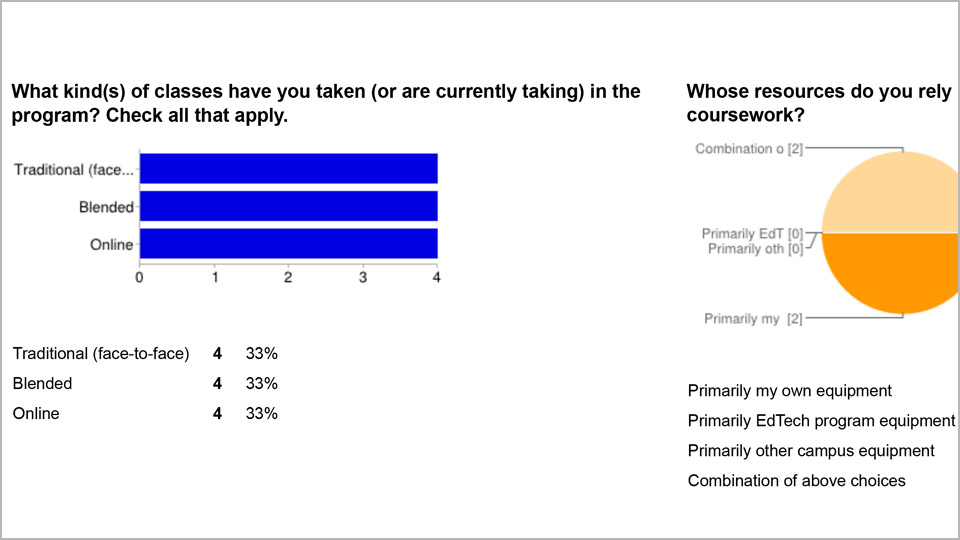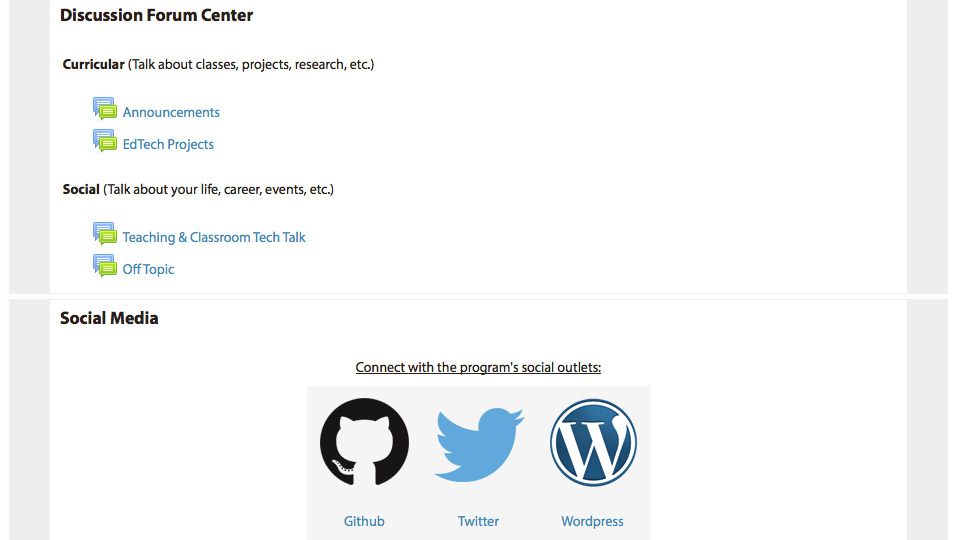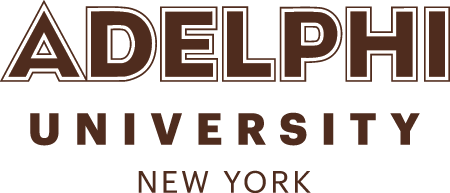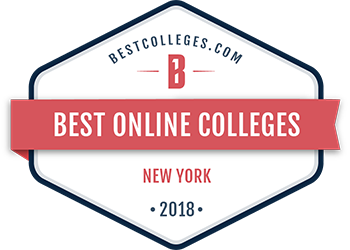Integrative Masters Project: Survey & Virtual Resources
Comments Off on Integrative Masters Project: Survey & Virtual ResourcesSurvey & Interviews
Researching current trends and best practices is important, but the practical application of a plan really requires tailoring to meet the realities you are working with. To that end, I’ve been piecing together an assessment of the current state of the program’s resources.
To gain insight into the student perspective, I emailed a survey to the program’s current students and alumni. Though the response rate was low (22.22%), there were some useful findings. Overall, students indicated they were happy with the program. High levels of satisfaction were indicated for both the community aspects of the program and the access to resources during class time. However, 2 of 4 (50%) registered a level 1 (or Unsatisfied) with regard to access to program resources outside of class time. There was variety among students using collaborative working spaces outside of the EdTech program on campus, but all 4 (100%) indicated that they would prefer a collaborative working space specifically for the EdTech program if given the option. Perhaps the most easily actionable items indicated through the survey would be to increase access to current resources, improve or add to those resources (hardware and software), and increase access to collaborative space for students to work and utilize said resources.

I also conducted personal interviews (virtually using Google Hangouts) with both of the dedicated full-time faculty members, as they have taught the bulk of the core courses within the program. Discussions were informal, but the overarching topic was Learning Spaces for the Educational Technology Program.
My first interview was with Professor and active Program Director Matt Curinga. He explained that courses for the Educational Technology program will be start running at the Manhattan Center campus starting August 20th. Feels that existing resources are sufficient, though there’s not enough access. He would like for there to be more of a life outside of class. Students often work on projects during office hours and in class. He would like for the classes to support their learning, and it’s reversed right now. Having a great space might help to switch that. If we had more of a ‘Panera’ type feeling more people would come. The Underground Café [Garden City campus] is kind of like that. Looking for more casual traffic and interactions. One issue is the fact that some students live on campus and others don’t.
My other interview was with Professor and soon-to-be Program Director Aaron Hung. For the Learning with Video Games course, he wishes that the classroom [Harvey 104, Garden City campus] was set up in a way to let two people play and have other people watch. He’s working on a game study right now with two of the program’s students. They plan on using Harvey 104. He spent time as a game monitor at Teacher’s College. That space had the same problems. They had funding and a bit more resources. They had a room kind of dedicated to gaming, and a slightly larger game library. But it was not used often. Response regarding online teaching, “I want to make sure that an online course isn’t just the online version of a face-to-face course.” Another difference is that online courses rely a lot on self-motivation.
Virtual Hub

The various assessments of the program as it exists now (survey, faculty interviews, resource assessment, research) clearly show that there are a lot of active components to the program. Courses are being taught at the Garden City campus, Manhattan Center campus, and online. Students are being placed in schools, presenting at conferences, and attending technology events. I strongly believe in the benefits of having an accessible working space for projects. However, the practical realities (different campus locations, lack of space, funding, time necessary to develop and execute a successful project plan) would make it difficult to organize such a project in a short timeframe. Therefore, I’ve opted to focus my efforts first on developing a virtual hub to act as an online community space for the Educational Technology students.
I designed a prototype of an online community space, presently named The EdTech Virtual Lounge. It’s hosted within Adelphi’s Moodle system for a variety of reasons (open source, campus support, reliability, student access). It’s program specific, but not class specific. It’s also location-neutral, making it equally useful to the three student populations (Garden City, Manhattan Center, online).

Major goals were to make it useful and collaborative. So I tried to make it so that students can mess around and use it on their own. They can start video chats, add events to the calendar, text talk in the forums, etc. It also ties together the program’s social media activity. Most of the content is pulling from other sources (Adelphi Twitter accounts, Google Calendar, Adelphi web sites) so the content can stay fresh with minimal direct maintenance. All of the individual components within the space exist to provide opportunities for students to collaborate, socialize, and guide their learning experiences online.
My hope is that all of the program’s students and faculty will find it worthwhile to utilize.
This article was originally published on August 4, 2014 by Tom Jennings, recent Graduate of the online Masters Program in Educational Technology at Adelphi University.


